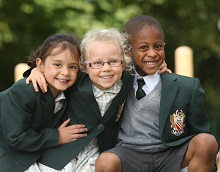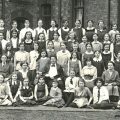Co-Education: The Natural Choice
 The time worn line is that boys and girls ‘do better’ at single sex schools.
The time worn line is that boys and girls ‘do better’ at single sex schools.
Do they? Really?
Often, those who cite the line as fact will hold up the crème de la crème of single sex schools as proof of the statement’s fundamental truth; but it is not the singularity of the gender that leads to such schools’ high performance – it is rather the exclusivity of their academic selection.
To those considering single–sex education as guaranteeing academic success for their child: be wary; the truth is that boys and girls of equal academic ability to those in such highly selective, single-sex educational establishments fare just as well within the co-educational environment.
Parents cannot access the individual ‘intelligence data’ of each and every pupil within each and every school (thank heavens!), and thus cannot compare ‘like for like’ to either give credence to the statement above, or otherwise; instead prospective parents are reliant upon the messages that are blasted out by the two camps as to the merits and demerits of single-sex or co-educational establishments. It’s hard to know where the truth lies.
If you are looking for objective proof, you will be disappointed: numerous reports have been published, particularly in recent times, which can both prove and disprove every theory regarding which is the best system of education.
So, here is my take on it:
Educating boys and girls together is education in its fullest, richest and broadest sense: it is balanced, stimulating, challenging and exciting. It places young people together in an environment of learning and enables them to each discover how best to work things out for themselves and to work together. Academic results matter in a young person’s educational journey, but so does personal growth, individual challenge, group dynamics and an appreciation of difference. The idea that girls or boys on their own get the same depth and diversity that is offered when they work alongside one another is simply not true. Young people need to understand diversity and work with it; they need to listen to what one another has to say about literature, history, chemistry and the latest sporting event or celebrity scandal. Learning from the outset that our interpretation of what we see, hear and feel is based upon a range of contexts including gender is a hugely enriching experience – and indeed a vital one. Gender is one way of dividing up young people; but to lay claim that it is the best and the right way to divide them up for educational development is short sighted.
Co-education poses its own challenges; to claim anything else would be naive – but such is the way of the world. In education, we are here to do precisely that: educate. We work with young people and guide them as best we can as they reach a reasonable understanding of the world; sometimes the journey is easy, at other times it throws up some tricky parts. Sometimes these involve the boys, sometimes it is the girls; sometimes it is both. By learning to live and work together, a co-educational school life enables a young person to prepare themselves for much that lies ahead of them.







